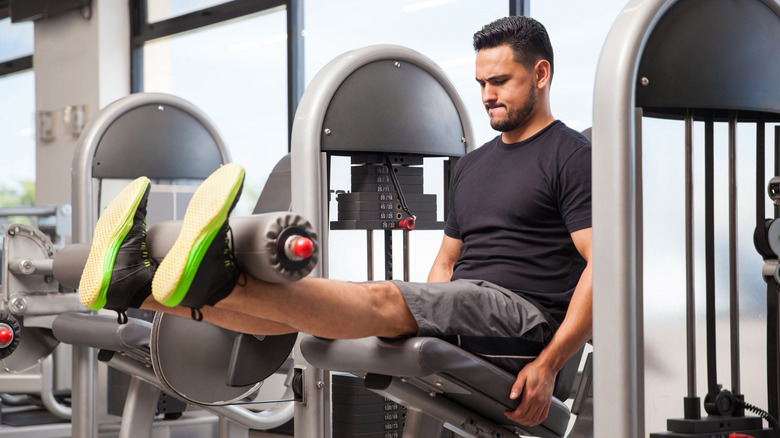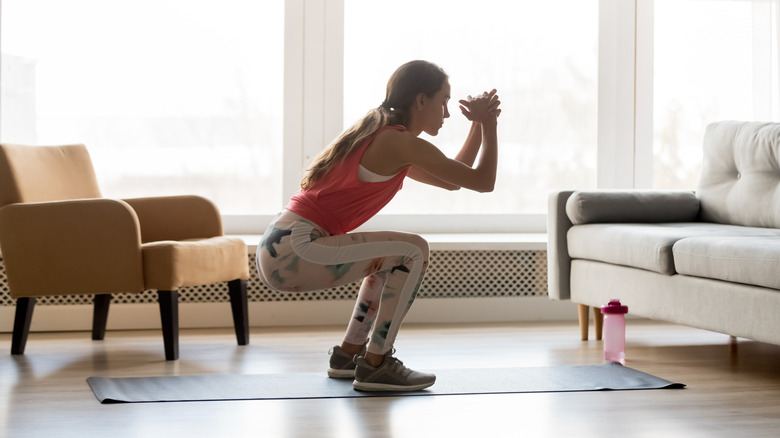Why You Should Think Twice Before Using The Leg Extension Machine
If you've ever been to the gym before, you're probably familiar with the leg extension machine. This machine is one of the most popular ways to isolate your quadriceps. However, many experts believe that this exercise causes more harm than good. "The leg extension machine applies constant tension to the anterior cruciate ligament (ACL)...," Chris Ryan, CSCS, told BestLife. "It also places maximum force on the back of the knee cap, which is the thinnest portion of the cartilage."
People with ACL or ligament injuries should avoid the leg extension machine completely. Anyone with any type of knee pain should avoid this machine because it puts intense stress on the entire area (via Livestrong). It can also increase your risk of lateral patellar deviation, which is an injury where the kneecap slides around unnaturally. Unlike other leg exercises, this machine does not allow the hamstring to be engaged during the movement. This means that your knee receives less support during the exercise and it is more likely to get injured.
There are plenty of safe alternatives to the leg extension machine
Instead of using a machine that puts you at risk of injuring your knees, perform exercises to strengthen your quads safely. Regular squats are a great way to do this (via Healthline). To perform a squat, start with your feet hip-width apart. Keeping your spine as straight as possible, slowly lower your body until your thighs are parallel to the floor. Ensure your knees don't collapse inward as you return to the start position. Hold a pair of dumbbells if you want more of a challenge. When done correctly, regular lunges and reverse lunges will both work your quadriceps without causing knee pain. These can be performed with or without added weight.
Alternative exercises to the leg extension machine will engage all the muscles in your lower body instead of just isolating the one. Building strong hamstrings, glutes, and calf muscles will improve stability, posture, and balance. All of these things will help you prevent knee pain and knee injuries in the future.


